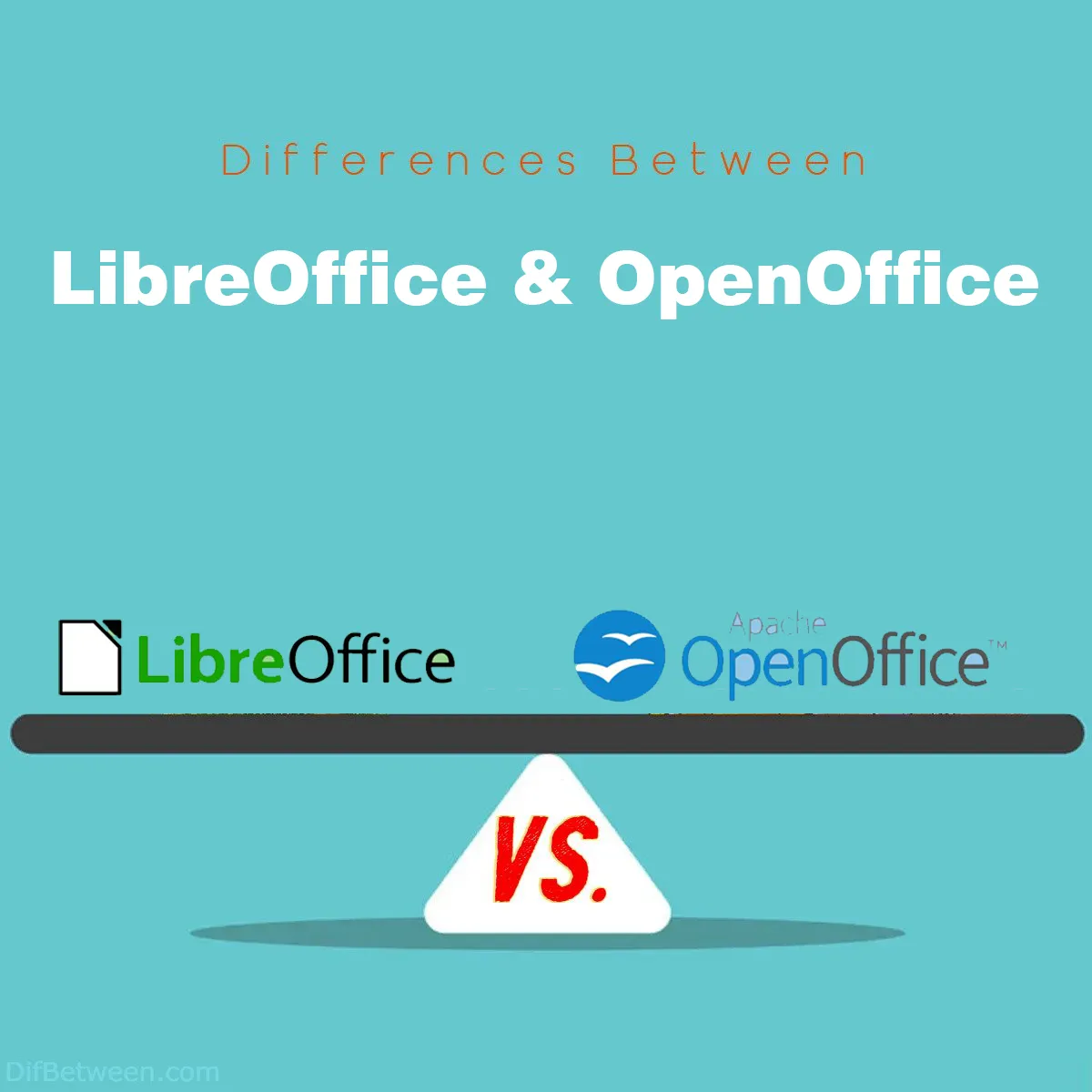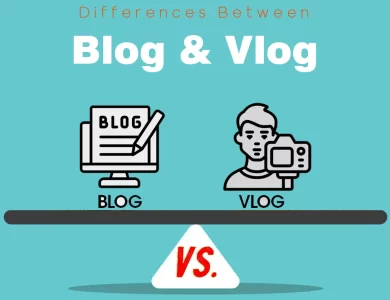
| Aspect | LibreOffice | OpenOffice |
|---|---|---|
| User Interface | Modern and customizable. Offers MUFFIN interface for layout flexibility. | Dated, with limited customization. Traditional toolbar and menu layout. |
| File Format Compatibility | Excellent support for various formats, including Microsoft Office and ODF. | Good compatibility but may lag with the latest Microsoft Office formats. |
| Development and Community | Active and vibrant community with frequent updates. Supported by The Document Foundation. | Slower development progress post-community split. |
| Extensions and Add-ons | Thriving ecosystem with a wide variety of options. | Smaller selection of extensions available. |
| Collaboration and Cloud Integration | Real-time collaboration and cloud integration options. | Relies on third-party solutions for these features. |
| Supported Operating Systems | Available for Windows, macOS, and various Linux distributions. | Available for Windows, macOS, and various Linux distributions. |
| Mobile Apps | Android viewer app available (limited editing capabilities). | No official mobile app, relying on third-party solutions. |
| Language Support | Excellent language options for interface and spell-checking. | Extensive language support covering various languages. |
| Accessibility Features | Strong accessibility support with screen reader and keyboard shortcuts. | Good accessibility features but may not be as extensive. |
| Support and Documentation | Comprehensive support, documentation, tutorials, and active user forums. | Active user community with available resources and documentation. |
| Licensing and Open Source | Licensed under Mozilla Public License v2.0. | Licensed under Apache License 2.0. |
When it comes to open-source office suites, LibreOffice and OpenOffice are two prominent contenders. Both offer a range of applications for word processing, spreadsheets, presentations, and more. But beneath their seemingly similar façade lie distinctive features and differences that can influence your choice. In this article, we’ll delve into the key aspects that set LibreOffice and OpenOffice apart. Whether you’re a student, a professional, or just someone looking for a free office suite, this comparison will help you make an informed decision.
Differences Between LibreOffice and OpenOffice
The main differences between LibreOffice and OpenOffice lie in their user interface, file format compatibility, development and community support, and collaboration features. LibreOffice offers a modern, customizable interface with active development and excellent compatibility with various file formats, including Microsoft Office and Open Document Format (ODF). It excels in real-time collaboration and cloud integration. OpenOffice, in contrast, sports a more traditional interface, may lag in handling the latest Microsoft Office formats, and has experienced a slower development pace. The choice between the two ultimately hinges on individual preferences and specific needs, making it essential to consider these distinctions when selecting the right open-source office suite for your workflow.
User Interface and Design
The user interface (UI) is your gateway to an office suite, so it’s vital to consider how comfortable and efficient it is for your workflow.
LibreOffice:
LibreOffice boasts a modern and visually appealing UI. It has made significant strides in enhancing its interface, particularly with the introduction of the MUFFIN interface concept. MUFFIN allows you to switch between different UI layouts, catering to both traditional and modern preferences. This adaptability can be a game-changer for users who prefer a more contemporary look and feel.
LibreOffice also provides a more streamlined Start Center, making it easier to access your recent documents and templates. The UI is customizable, allowing you to tweak toolbars, menus, and keyboard shortcuts to match your workflow.
OpenOffice:
OpenOffice, on the other hand, has a UI that may seem a bit dated when compared to LibreOffice. While some users appreciate the simplicity of its interface, others may find it less intuitive and less visually appealing.
OpenOffice uses the traditional toolbar and menu layout, which might feel familiar to long-time Microsoft Office users. However, it doesn’t offer as many customization options as LibreOffice. This lack of flexibility can be a drawback for users who prefer a more personalized experience.
| Aspect | LibreOffice | OpenOffice |
|---|---|---|
| User Interface | Modern and customizable | Dated, with limited customization |
File Format Compatibility
Compatibility with popular file formats is crucial when working in an office suite. You want your documents to be accessible and editable by others, regardless of the software they use.
LibreOffice:
LibreOffice excels in file format compatibility. It supports a wide range of formats, including the standard Microsoft Office formats (e.g., .docx, .xlsx, .pptx), as well as older Microsoft Office formats. This makes it a reliable choice for collaborating with users who prefer Microsoft Office.
Moreover, LibreOffice is known for its native support of the Open Document Format (ODF). ODF is an open standard for office documents, ensuring that your files remain accessible and editable without format-related hiccups.
OpenOffice:
OpenOffice also offers good compatibility with various file formats, including the Microsoft Office formats. It can open and save files in formats like .doc, .xls, and .ppt. However, it’s worth noting that OpenOffice’s compatibility with the latest Microsoft Office formats (.docx, .xlsx, .pptx) may not be as seamless as LibreOffice’s.
In terms of ODF support, OpenOffice was one of the early adopters of this format. So, like LibreOffice, it ensures that your documents maintain their integrity when shared with others using ODF-compatible software.
| Aspect | LibreOffice | OpenOffice |
|---|---|---|
| File Format Compatibility | Excellent support for various formats | Good compatibility but may lag with the latest Microsoft Office formats |
Development and Community Support
The strength of an open-source project often lies in the size and activity of its community, as well as the frequency of updates and improvements.
LibreOffice:
LibreOffice has a vibrant and active community of developers and contributors. This community-driven approach has led to regular updates and improvements. It benefits from The Document Foundation’s support, an organization dedicated to the growth and enhancement of LibreOffice.
Updates and bug fixes are relatively frequent, ensuring that the software remains stable and secure. This is especially important for users who rely on office software for their daily tasks.
OpenOffice:
OpenOffice, once a flagship open-source project, has experienced some turbulence in its development. After Oracle acquired Sun Microsystems (the original sponsor of OpenOffice), there was a split in the community. The result was the birth of LibreOffice, which many contributors and developers migrated to.
While OpenOffice is still actively developed, its progress and updates have been somewhat slower compared to LibreOffice. This means that new features and bug fixes may take longer to reach users.
| Aspect | LibreOffice | OpenOffice |
|---|---|---|
| Development and Community | Active and vibrant, with frequent updates | Slower development progress, post-community split |
Extensions and Add-ons
Extensions and add-ons can greatly enhance the functionality of an office suite, allowing you to tailor it to your specific needs.
LibreOffice:
LibreOffice boasts a thriving ecosystem of extensions and add-ons. You can find a wide variety of extensions on the LibreOffice Extensions website, ranging from grammar checkers to templates and productivity tools. The availability of these extensions enhances LibreOffice’s versatility, making it adaptable for various tasks and industries.
OpenOffice:
OpenOffice also offers a range of extensions and add-ons, though the selection may be somewhat smaller compared to LibreOffice. You can find extensions on the OpenOffice Extensions website, covering areas like document management and language tools. While it may not have as extensive a library as LibreOffice, OpenOffice still provides valuable additional functionality.
| Aspect | LibreOffice | OpenOffice |
|---|---|---|
| Extensions and Add-ons | Thriving ecosystem with a wide variety of options | Smaller selection of extensions |
Collaboration and Cloud Integration
In today’s interconnected world, collaboration and cloud integration are essential features for many users.
LibreOffice:
LibreOffice has made significant strides in improving its collaboration capabilities. It offers real-time collaborative editing through the LibreOffice Online platform. This means you can work on documents with others simultaneously, similar to Google Docs or Microsoft Office Online.
Additionally, LibreOffice integrates well with cloud storage services like Google Drive and Nextcloud. You can access and save documents directly to these cloud platforms, making it easier to work on your documents from different devices.
OpenOffice:
OpenOffice, while capable of collaborative work, may not be as advanced in this aspect as LibreOffice. It primarily relies on third-party solutions for cloud integration and real-time collaboration. While it’s possible to use OpenOffice in conjunction with services like Dropbox or ownCloud, it may not offer the same seamless experience as LibreOffice.
| Aspect | LibreOffice | OpenOffice |
|---|---|---|
| Collaboration and Cloud Integration | Real-time collaboration and cloud integration | Relies on third-party solutions for these features |
Supported Operating Systems
The choice between LibreOffice and OpenOffice can also be influenced by the operating system you use.
LibreOffice:
LibreOffice is known for its cross-platform compatibility. It is available for Windows, macOS, and various Linux distributions, making it a versatile choice for users who switch between different operating systems.
OpenOffice:
OpenOffice also supports multiple operating systems, including Windows, macOS, and various Linux distributions. Like LibreOffice, it’s designed to cater to a wide user base.
| Aspect | LibreOffice | OpenOffice |
|---|---|---|
| Supported Operating Systems | Windows, macOS, Linux | Windows, macOS, Linux |
Mobile Apps
In an increasingly mobile world, having access to your office suite on smartphones and tablets is essential for many users.
LibreOffice:
LibreOffice has a mobile app called “LibreOffice Viewer” available for Android devices. While it allows you to view documents, it’s important to note that it’s a viewer and not a full-fledged mobile office suite. Editing capabilities are limited, and the experience may not be as seamless as on desktop platforms.
OpenOffice:
OpenOffice doesn’t have an official mobile app, which can be a significant drawback for users who require mobile access to their documents. While there are third-party office suite apps available for Android and iOS devices, they may not provide the same compatibility and user experience as the official mobile apps of other office suites.
| Aspect | LibreOffice | OpenOffice |
|---|---|---|
| Mobile Apps | Android viewer app available | No official mobile app |
Language Support
For users who work with multiple languages or require extensive language support, this aspect can be crucial.
LibreOffice:
LibreOffice boasts excellent language support, with a vast array of languages available for its interface and spell-checking. This makes it a suitable choice for international users and those who work with non-English documents frequently.
OpenOffice:
OpenOffice also offers extensive language support, though it may not have the same breadth of options as LibreOffice. It covers a wide range of languages, making it suitable for most users’ language needs.
| Aspect | LibreOffice | OpenOffice |
|---|---|---|
| Language Support | Excellent language options | Extensive language support |
Accessibility Features
Accessibility features are crucial for ensuring that office software can be used by individuals with disabilities.
LibreOffice:
LibreOffice has taken significant steps to improve its accessibility features. It includes features like screen reader support, keyboard shortcuts for navigation, and compatibility with assistive technologies. These features make it a more inclusive choice for users with disabilities.
OpenOffice:
OpenOffice also includes accessibility features, though its support may not be as extensive as LibreOffice’s. It offers screen reader support and some keyboard shortcuts, but users with specific accessibility needs may find LibreOffice to be a more accommodating option.
| Aspect | LibreOffice | OpenOffice |
|---|---|---|
| Accessibility Features | Strong accessibility support | Good accessibility features |
Support and Documentation
Access to support and comprehensive documentation can be a lifesaver when you encounter issues or need assistance.
LibreOffice:
LibreOffice benefits from a robust support community. You can find a wealth of documentation, tutorials, and forums online where you can seek help with any issues you encounter. The official website also offers user guides and FAQs.
OpenOffice:
OpenOffice also has an active user community and provides documentation and forums for users seeking assistance. However, the availability of third-party support and resources may not be as extensive as LibreOffice’s.
| Aspect | LibreOffice | OpenOffice |
|---|---|---|
| Support and Documentation | Comprehensive support and documentation | Active user community with available resources |
Licensing and Open Source Philosophy
Both LibreOffice and OpenOffice are open-source software, but they have different licenses and philosophies.
LibreOffice:
LibreOffice is licensed under the Mozilla Public License v2.0. This license allows for greater flexibility in terms of integrating LibreOffice with other software and services. It aligns with the broader open-source ecosystem’s philosophy.
OpenOffice:
OpenOffice, on the other hand, is licensed under the Apache License 2.0. While it’s also an open-source license, it has different implications, particularly regarding how the software can be used and integrated with other projects.
| Aspect | LibreOffice | OpenOffice |
|---|---|---|
| Licensing and Open Source | Mozilla Public License v2.0 | Apache License 2.0 |
LibreOffice or OpenOffice : Which One is Right Choose for You?
When it comes to open-source office suites, LibreOffice and OpenOffice are two major contenders. Both offer a range of applications for word processing, spreadsheets, presentations, and more. But which one should you choose? Let’s break down the key factors to consider when deciding between LibreOffice and OpenOffice.
User Interface and Design
LibreOffice:
LibreOffice boasts a modern and customizable user interface. It has made significant strides in enhancing its interface, catering to both traditional and modern preferences. With the MUFFIN interface concept, you can switch between different UI layouts, offering adaptability for various users.
OpenOffice:
OpenOffice’s UI may feel a bit dated compared to LibreOffice. It sticks to the traditional toolbar and menu layout, which some users appreciate for its familiarity. However, it lacks the same level of customization options as LibreOffice.
File Format Compatibility
LibreOffice:
LibreOffice shines in file format compatibility. It supports a wide range of formats, including the standard Microsoft Office formats (.docx, .xlsx, .pptx) and older formats. It also offers robust native support for the Open Document Format (ODF), ensuring seamless file sharing.
OpenOffice:
OpenOffice offers good compatibility with various formats, including Microsoft Office formats. However, it may not handle the latest Microsoft Office formats as smoothly as LibreOffice.
Development and Community Support
LibreOffice:
LibreOffice benefits from an active and vibrant community of developers and contributors. Frequent updates and improvements are part of its strength, with the support of The Document Foundation.
OpenOffice:
OpenOffice, while still actively developed, has faced some challenges post-community split, resulting in slower development progress compared to LibreOffice.
Extensions and Add-ons
LibreOffice:
LibreOffice has a thriving ecosystem of extensions and add-ons. You can find a wide variety of options to enhance your productivity.
OpenOffice:
OpenOffice also offers extensions and add-ons but with a smaller selection compared to LibreOffice.
Collaboration and Cloud Integration
LibreOffice:
LibreOffice excels in collaboration and cloud integration. It offers real-time collaborative editing and integrates well with cloud storage services.
OpenOffice:
OpenOffice supports collaborative work but may not be as advanced as LibreOffice. It relies on third-party solutions for cloud integration.
Supported Operating Systems
LibreOffice and OpenOffice:
Both are available for Windows, macOS, and various Linux distributions, making them versatile choices.
Mobile Apps
LibreOffice:
LibreOffice has an Android viewer app available, but it primarily allows viewing rather than extensive editing.
OpenOffice:
OpenOffice lacks an official mobile app, which can be a limitation for users requiring mobile access.
Language Support
LibreOffice:
LibreOffice offers excellent language support, making it suitable for international users.
OpenOffice:
OpenOffice also provides extensive language support, though it may not cover as many languages as LibreOffice.
Accessibility Features
LibreOffice:
LibreOffice prioritizes accessibility with features like screen reader support and keyboard shortcuts.
OpenOffice:
OpenOffice also includes accessibility features, but they may not be as extensive as LibreOffice’s.
Support and Documentation
LibreOffice:
LibreOffice benefits from a comprehensive support community, with abundant documentation, tutorials, and forums available.
OpenOffice:
OpenOffice also has an active user community and provides documentation and forums, though it may have fewer third-party resources.
Licensing and Open Source Philosophy
LibreOffice:
Licensed under the Mozilla Public License v2.0, aligning with the broader open-source ecosystem’s philosophy.
OpenOffice:
Licensed under the Apache License 2.0, another open-source license with different implications.
FAQs
LibreOffice and OpenOffice are open-source office software suites that provide a range of applications for word processing, spreadsheets, presentations, and more. They are alternatives to commercial office suites like Microsoft Office.
Yes, both LibreOffice and OpenOffice are open-source software and are free to download, use, and distribute. There are no licensing fees.
The main differences include their user interfaces, file format compatibility, development and community support, extensions and add-ons, collaboration and cloud integration, and licensing.
Your choice depends on your preferences and needs. If you prefer a modern interface, strong compatibility with various formats, and frequent updates, LibreOffice might be better. OpenOffice is a good choice if you prefer a traditional interface and can work with older file formats.
Yes, you can switch between them relatively easily since they both support a wide range of file formats. You can open and edit documents created in one suite with the other.
LibreOffice offers real-time collaborative editing and integrates with cloud storage services. OpenOffice also supports collaboration but may require third-party solutions for cloud integration.
LibreOffice has an Android viewer app for document viewing, but it primarily allows viewing rather than extensive editing. OpenOffice lacks an official mobile app.
Yes, both suites offer accessibility features, including screen reader support and keyboard shortcuts. LibreOffice is known for its strong accessibility support.
Yes, both LibreOffice and OpenOffice are available for Windows, macOS, and various Linux distributions, ensuring broad compatibility.
Yes, both have active user communities and provide documentation, tutorials, and forums for users seeking assistance.
LibreOffice is licensed under the Mozilla Public License v2.0, while OpenOffice is licensed under the Apache License 2.0. These licenses have different implications regarding usage and integration with other projects.
Read More :
Contents






